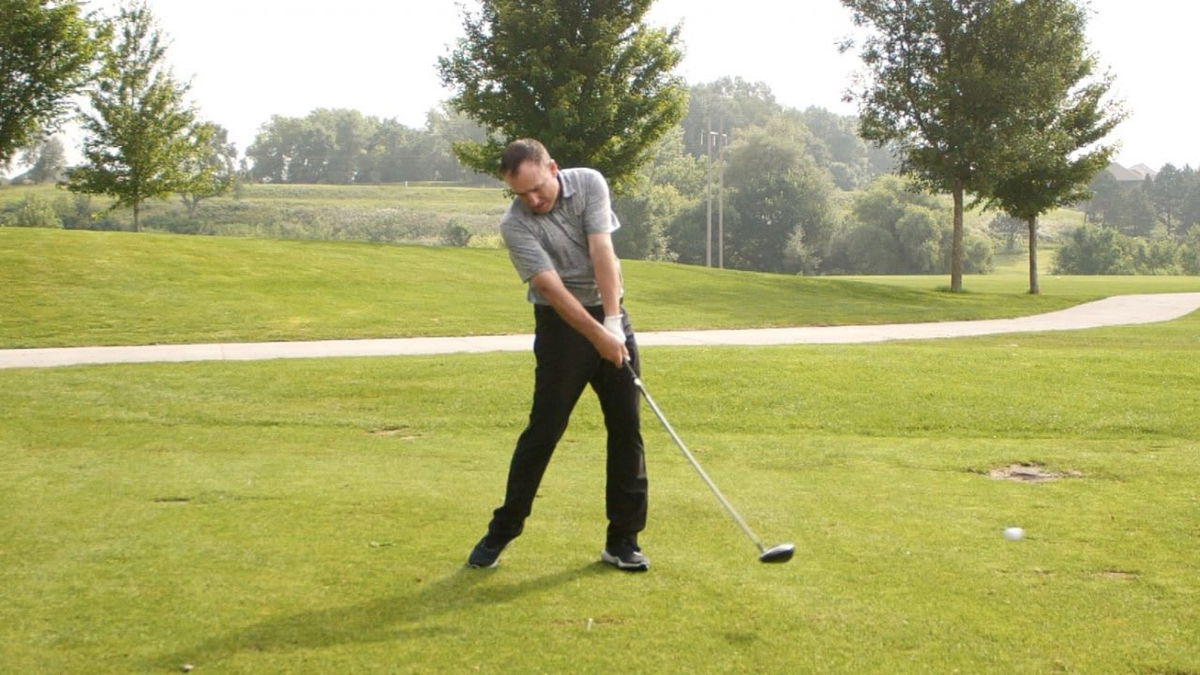
Imago
via US Golf TV

Imago
via US Golf TV
The key to a lower score is hitting greater distances and reaching higher ball flights. However, on the flip side, if the flight isn’t controlled, the ball might land farther away from the target. So, we should just aim better, right? Well, to an extent that helps. But what can be a game-changer is learning how to hit a draw. We have five tips to help you get your first draw, but first, it’s important to know its significance.
Watch What’s Trending Now!
The opposite of a fade, for right-handed golfers, hitting a draw means producing a ball flight that starts slightly to the right of the target and gently curves back towards the target. This helps cover a greater distance, since the ball has less backspin and more roll. Moreover, these shots feel more powerful, taking a strong, penetrating flight through the wind. In simple words, hitting a draw can help any rookie instantly start noticing improvements in their game.
Top Stories
Anger Mounts Against Paige Spiranac for Behavior Toward Rival During Internet Invitational

Justin Rose & More Show Respect as Veteran Golfer Breaks Down After Reclaiming Tour Card

Charley Hull Shares Travel Woes She Faced to Play at Annika Sorenstam’s LPGA Event: ‘I Felt Sick’

Kai Trump Applies Lesson Taught by Tiger Woods After Struggling at LPGA Debut

LPGA Under Scrutiny as Caitlin Clark and Kai Trump Headlines Eclipse Tour’s Long-Term Plans

ADVERTISEMENT
#1: Set Up for an In-to-Out Path
The most basic principle of hitting a draw is to swing the club from the inside as it makes the impact. However, misalignment during the shot can alter its path. To give room for the ball to make that desired arc, your setup needs to be carefully curated. That includes perfect body alignment.
Aim your shoulders slightly to the right of the target (to the left for left-handed golfers), just a touch. Now, you don’t need to dramatically face your entire torso away from the target. That might hurt your chances of closing in on the hole. This slight adjustment gives the club room to approach the ball on an in-to-out path without you having to manipulate it during the swing. Moreover, it’s important to rotate with your chest and arms, instead of your hands, as you hit the swing.
View this post on Instagram
ADVERTISEMENT
#2: Strengthen Your Lead-Hand Grip
The angle that your clubface makes at impact and through the swing plays a big role in whether a shot becomes a draw or a slice. A draw requires a more closed path relative to the swing path. However, without flipping your hands much at impact, the easiest way to provide that angle is by working on your grip.
ADVERTISEMENT
If you’re right-handed, this means turning your left hand a bit clockwise so the pad of your hand sits more on top of the grip rather than on the side. To assess whether the grip is aligned perfectly for the draw, you should be able to see 2-3 of your lead hand knuckles when you look down. A stronger grip gives you better face control, removing the unpredictability of the shot. Consequently, it helps you keep the clubface square with the ball and the target better.
#3: Start the Downswing with a Hip Bump
Weight management and balance are the keys to powerful, intentional shots. However, a draw adds nuance to the strike, requiring the club to drop slightly inside the target line on the downswing. That becomes all the more reason for a better stance and knowing how to shift your weight through the swing so that your body doesn’t sway with the hit.
ADVERTISEMENT
As you transition from backswing to downswing, make a quick, athletic shift of your hips toward the target. This is not a loud movement but rather thrives in the subtle force that re-centers your body to your lead side. This hip movement can help accommodate your lower body along with the swing, helping you drop your club to the inside of the target line.
#4: Release the Trail Arm Over the Lead Through Impact
Hitting a draw is all about the curve of your ball flight. Now, to achieve that, we must understand the physics of objects in motion. A slight external force, like a nudge, can translate into the object being penetrated through the medium, in our case, air. However, the snappier the shot is, the farther it trails off from the target. To find the sweet spot without straining your wrists, your back arm plays the biggest role.
ADVERTISEMENT
Generating most of the power and the angle, trailing your left hand (for a right-handed golfer) over your right as you finish the swing helps create a slight arc to the ball flight towards your target. Straighten your arm before rotating it inwards. Think of it as the same motion you’d use to throw an underhand ball, just perpendicular to it.
#5: Rotate—Don’t Sway
Probably the most important tip out of this list, all the other adjustments fail to create a draw if you don’t follow through well. A solid draw comes from a powerful, rotational swing, not a lateral side-to-side movement. When you rotate properly, going back and then commit fully through the ball, you keep the club on a consistent in-to-out path and prevent the face from stalling open.
Right as you finish the swing, rotate your trail leg while staying grounded in your position. An important note to make is to prevent your body from leaning forward too much or sliding your body to the left. That can negatively affect your balance and prevent your swing from getting too long or off-plane.
A good draw isn’t about forcing the club. Rather, it’s about setting up the right conditions and letting the swing work naturally. With proper alignment, grip, sequencing, release, and rotation, the ball will curve on its own. Master these fundamentals, and the draw becomes a reliable, powerful shot you can trust.
ADVERTISEMENT
ADVERTISEMENT
ADVERTISEMENT

